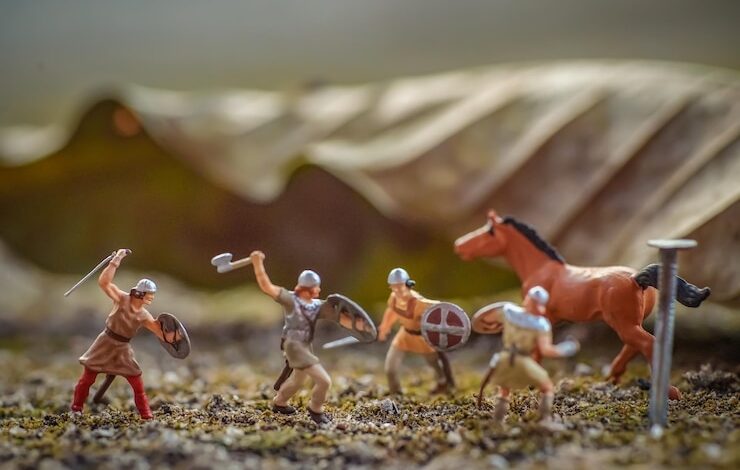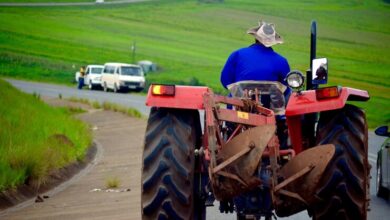Breaking Ground: The Age-Old Art and Modern Science of Ploughing

Ploughing is more than just turning over soil—it’s the heartbeat of agriculture, a ritual that predates written history. From ox-drawn wooden ploughs to GPS-guided tractors, the process of preparing land has evolved tremendously, but its importance remains unwavering. Farmers across the globe still rely on this essential technique to ensure their crops grow strong, healthy, and high-yielding.
In this article, we’ll explore ploughing not just as a method but as a philosophy rooted in sustainability, soil health, and human ingenuity.
The Roots of Ploughing: A Brief History
Ploughing can be traced back to ancient Mesopotamia and Egypt, where simple hand tools were first used to loosen soil. As agriculture evolved, so did the tools. The Chinese developed iron ploughshares around 500 BC, while medieval Europe adopted the heavy mouldboard plough to handle dense soils.
What’s fascinating is that early farmers understood something scientists are just now quantifying: soil must breathe. By turning it over and allowing air, moisture, and organic material to mix, early ploughmen unknowingly nurtured microbial life, which in turn supported plant growth.
Why Ploughing Matters in Modern Agriculture
Rejuvenating Soil Structure
When land is ploughed correctly, compacted layers of soil are broken up, improving porosity and allowing roots to penetrate deeper. This enables crops to access essential nutrients and moisture during dry spells.
Controlling Weeds and Pests
Ploughing disrupts the lifecycle of weeds and soil-dwelling pests. By turning the upper layers of soil, weed seeds are buried and decomposed, while pests lose access to oxygen and food sources.
Enhancing Fertility
Ploughing mixes in organic material—such as crop residue and manure—which boosts soil fertility naturally. Over time, this practice can improve soil tilth and water-holding capacity.
Mitigating Erosion When Done Right
Although excessive or poor ploughing can lead to erosion, strategic ploughing—especially on contours or with conservation practices—can help manage runoff and preserve topsoil.
Types of Ploughing Techniques: Traditional and Contemporary Approaches
Conventional Ploughing
This classic method involves inverting the soil with a mouldboard plough. It’s effective for weed control but can sometimes lead to soil degradation if overused.
Strip Tillage
A conservation method where only narrow strips of soil are tilled, leaving the rest untouched. This reduces erosion and maintains more organic matter.
No-Till Farming
Ironically, this method is a response to the downsides of ploughing. By avoiding soil disturbance, farmers preserve the natural structure of the soil, reducing erosion and improving carbon sequestration.
Rotary and Chisel Ploughing
Chisel ploughs break up compacted soil without flipping it, which helps maintain soil layers. Rotary ploughs, on the other hand, chop and turn the soil with rotating blades—ideal for tight plots and mixed-use farms.
Timing and Techniques: When and How to Plough
Seasonal Considerations
In most temperate climates, farmers plough either in the fall or early spring. Autumn ploughing allows frost to naturally break down large soil clods, while spring ploughing warms the soil quickly for seed sowing.
Depth and Speed
The ideal depth ranges between 6 to 12 inches depending on crop type, soil condition, and plough design. Speed also matters—going too fast can lead to uneven soil turnover and excessive wear on equipment.
Moisture Matters
Ploughing on overly wet or dry soil can do more harm than good. Moist, crumbly soil is optimal for even slicing and turning, minimizing clumping and compaction.
The Role of Technology in Ploughing Today
Precision Agriculture
With GPS, drones, and satellite imagery, modern ploughing isn’t guesswork anymore. Farmers can tailor their ploughing to the exact needs of each part of their field.
Smart Tractors and Implements
Today’s ploughs can adjust their depth automatically based on real-time soil feedback. Combined with autonomous tractors, this makes ploughing faster, more accurate, and more sustainable.
Soil Monitoring and AI
Sensors embedded in the ground now help assess soil moisture, compaction, and pH levels. AI systems analyze this data to recommend the best ploughing strategies, balancing yield with soil health.
Sustainable Ploughing: Balancing Tradition with Ecology
Sustainability Isn’t Optional
Conventional ploughing, while effective, has environmental costs—like carbon release and topsoil loss. The key is moderation and innovation.
Cover Cropping and Crop Rotation
Incorporating legumes, grasses, and other cover crops into the rotation enhances soil life and structure, reducing the need for intensive ploughing.
Carbon Sequestration and Soil Health
Emerging research suggests that reduced or conservation ploughing can help lock carbon into the soil, making agriculture a part of the climate solution.
Common Challenges Farmers Face with Ploughing
Soil Compaction from Heavy Machinery
Ironically, while ploughing loosens soil, repeated machinery use can cause deep compaction, affecting root growth. Subsoiling may be required to fix this.
Cost and Fuel Usage
Modern ploughs and tractors are efficient but also expensive to maintain. With rising fuel prices, ploughing can eat into profit margins if not optimized.
Weather Unpredictability
Rain, frost, or drought can make fields unsuitable for ploughing, especially with climate instability becoming the norm.
FAQs
What is the main purpose of ploughing in farming?
Ploughing breaks up and aerates the soil, making it easier for roots to penetrate, and helps incorporate organic material and fertilizers. It also helps manage weeds and pests.
Is ploughing harmful to soil in the long run?
When done excessively or improperly, ploughing can degrade soil structure and lead to erosion. However, when practiced sustainably, it can be beneficial for long-term soil health.
How often should a field be ploughed?
This depends on crop rotation, soil type, and climate. Many farmers plough once a year or rotate between ploughing and no-till methods to minimize damage.
Can ploughing be done manually?
Yes, small-scale or traditional farmers still use hand tools or animal-drawn ploughs. While labor-intensive, these methods are more eco-friendly and suitable for limited areas.
What alternatives exist to traditional ploughing?
No-till farming, strip tilling, and permaculture practices are modern alternatives. They aim to preserve soil structure while still achieving good yields.
Conclusion
Ploughing is one of agriculture’s most enduring practices, bridging the wisdom of our ancestors with the innovations of today. While its tools and techniques have changed, its essence—preparing the earth for life—remains unchanged. Whether you’re a seasoned farmer, a hobby gardener, or simply curious about sustainable living, understanding the intricacies of ploughing is a step toward deeper appreciation of the land beneath our feet. In the end, the way we treat our soil shapes not just our harvests, but our future.



